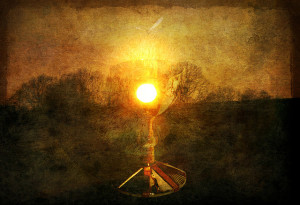Episode Three: What Is the Holy Grail?
Podcast: Play in new window | Download
Subscribe: RSS
At last we have the relaunch episode of One Hundred Centuries! From now on, except for announced breaks, we should be releasing an episode every two weeks.

Today we look at two early sources for the grail legend: the earliest source, “Perceval or the The Story of the Grail” by Chrétien de Troyes and an outlier tale with many differences from more traditional grail tellings, “Peredur, Son of Efrawg.”
These two sources raise plenty of questions about how this legend originated and what the intended message of the story really is.
What does the grail mean to you?
Play the episode at the bottom of the page or in iTunes.
Sources for Discussion:
de Troyes, C. (1991). Arthurian Romances. ( W.W. Kibler & C. W. Carroll trans.) (W.W. Kibler, Ed.) New York: Penguin. (Original work published ca. 1190).
Anonymous. (2000). The Mabinogion. (G. Jones & T. Jones, trans.). London: Orion. (Original work published ca. 15th century).
Williams, M. (1960). Some aspects of the grail problem. Folklore, 71(2), 85-103. Retrieved from http://www.jstor.org/stable/1258383
Wood, J. (2000). The holy grail: From romance motif to modern genre. Folklore, 111(2), 169-190. Retrieved from http://www.jstor.org/stable/1260602
Other Cultural Items Mentioned:
Monty Python and the Holy Grail
Indiana Jones and the Last Crusade
Le Morte d’Arthur by Sir Thomas Malory
Image Credit: Alice Popkorn, Flickr Creative Commons